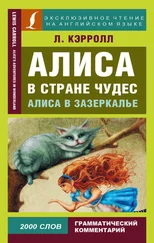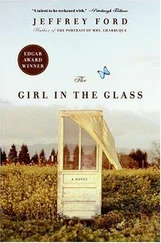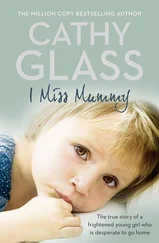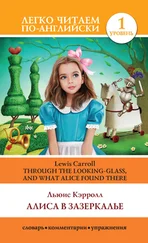“I never felt like a child.”
“No, I don’t suppose children like you do.” I look away, dab my eyes with my napkin. I try a sip of the coffee.
“Walking was very hard for him. After a while, he moved to a facility that could care for him.”
I think about the postmark on the blank envelope. “Do you know the name of the — place — the home?”
“It’s been some years. About an hour north of here. Armonk? Yes, that’s right. A very nice place. He was receiving excellent care.” He turns his eyes to the street outside. Two men with large handheld metal tools scour the sidewalk with blasts of water. Gum removal specialists. “So, to answer your second question. . I don’t know if he is dead.”
The waitress brings my soup and his salad. The soup is way too complicated. It has lots of things floating in it. A minestrone. I push it away. Then I bring out the letter and slide it across the table to him.
He runs his hand over the envelope, opens it gingerly, unfolds the light parchment paper, reads it. “Yes, this is his handwriting. . But this letter, it doesn’t sound like him. He wasn’t angry with you when I knew him.”
I take the letter back. I fold it and put it back in the envelope.
“When was the last time you saw him?”
He looks troubled. “For a long time, I visited him regularly. It meant something, I think. To both of us. But then, several years ago, well, I stopped.”
“Why?”
“The boy.”
“What boy?”
“This boy. He was — not a boy, a young man.” He wipes his mouth with his napkin, and pushes the half-finished salad aside. Now he orders coffee. “He started to come visit every few months. He was, I thought, a bit strange. Intense. He flew all the way from California to visit Maurice.”
My skin goes cold. All the new good feelings dissipate. A boy? A young man? I square my shoulders, raise my chin.
He looks down at his plate and then up. His face is very sad. “Maybe I was jealous. I felt he didn’t need me anymore. Some of us — for better or worse — like to be needed.”
I brace myself. “What was his name — the boy?”
He shakes his head. “I don’t remember.” He smiles sheepishly. “He was a lawyer.”
He looks at me for several long moments while we sip our coffee. “Every year, Maurice gave a lot of money to SAB. They might have his contact information.”
He gestures for the bill. “There’s something else — I don’t know if — but, well, one more thing,” he says. “The young man who showed up, well, Maurice introduced him as his son.”
“His son?”
Rob stands to leave. “The old fool. Surprised everyone.”
So Mira becomes one of the three hundred girls who attend SAB. She is put into B1, Intermediate Level, where the color of leotards is midnight blue. She is one of the four routinely selected by call-outs to demonstrate the steps. Mira, Felicia, Natasha, Bryce.
She feels that thing that was set loose by her fall — the part of her that wants to laugh and fling back her head and twist Ms. Clement’s kind hands until they break — brought her here. Under the stares of the Russians, this thing rears up, animated. The Russians hate her and she respects them for it. It makes her dance better. It is now these women, with their faulty English, their imperious attitudes, their quick jabs to her flesh, their movement tics and flourishes — it is this that she craves. It is this that makes her feel she has arrived.
Maurice shows her a documentary called The Children of Theater Street . It is about the making of ballet dancers in the Soviet Union, the same great ballet factories that produced Baryshnikov and Makarova. She learns that in this other land the boys and girls come from all over — hundreds, even thousands, of miles — to audition. They are measured, and their natural gifts are tested, the way they tested Mira. The documentary follows the lives of the chosen few girls and boys who have been taken from their homes in the provinces and brought to Leningrad to train. One girl sleeps on a cot in the kitchen of her host family’s apartment. It is rolled out every evening and rolled away at five in the morning when the girl rises, and after a breakfast of beets and bread by flashlight (her host family still sleeping), she begins her hours-long journey to the Kirov studios, where she will have a long day of grueling classes. She is eleven years old.
And now Mira is studying with these Russians, who had trained in those very same ballet factories; Mr. B — Balanchine — had gathered them together: Alexandra Danilova, one of his earliest partners. Kiev’s State Theater’s Tumkovsky and Hélène Dudin who emigrated after World War II. Felia Doubrovska, who danced at the legendary Mariinski Theater before the Russian Revolution. Former Bolshoi principals Nikolai Tarasov and Andrei Kramarevsky.
Mr. B is both familiar father figure, warm and human, and as remote as a god. Each girl lives for the day he will visit her class, run his eyes over the lot of them, stop at her, and magically elevate her to the likes of one of his muses. Suzanne Farrell is his most revered. The newest of his muses, Darci Kistler, is scarcely two years older than Mira.
Like a family, bound by its own mythology. One can hardly switch parents; one makes do, adapts. In family life, in a family of good children, each one strains to be the best.
Mr. B’s girls. They are being molded into the stick-thin hipless Balanchine ballerinas, known far and wide as Balanchine’s “pinheads.” Pinheads. If there is a fairy tale at work here, it is not really Cinderella, but something more like Hansel and Gretel . A brittle finger bone, a threat of fire and oblivion, a trail of receding crumbs disappearing in the woods of a vanishing child-self.

The SAB changing rooms are like a gym, with metal lockers, long wooden benches, and a back room with showers. The only thing that sets it apart from a gym changing room is the big cat litter — size box of rosin in the corner by the door, where the hard yellow rock sits chipped and battered amid a powder of its own skin.
One afternoon after Mira has been at SAB a few weeks, she is in the changing room before class. She takes out her pointe shoes and bends to unroll the ribbons. The shoes are new. Capezios. Just this morning she closed her bedroom door on the toe box several times to break them in. (Judy shouting from the kitchen, “Mira, what are you doing? Stop making that racket!”) She shakes them out and runs her hand along the lining just to make sure. She heard about a girl who had to go to the hospital because someone put glass in her pointe shoes and it chewed up her feet so badly that she was out for several months. Or that was the story. You hear things, lots of things. You never know what is true.
As she is slipping on her shoes, two girls come in from some class in sweat-drenched leotards. They both have brown hair, but one looks wispy and the other more solid. Yet another brown-haired girl comes in behind them, thinner than the other two.
“How much do you have to lose?”
“They want five pounds by the summer.”
Mira thinks of Adele, a girl she’s heard stories of, who was supposed to have been great. Mr. B has picked her out during a class, once. But after Adele was talked to about her weight, she began peeling the skin from the bottom of her feet and the wounds caused an infection that finally put her out of class for a month. By the time she came back to class, she had gained more weight. She was not invited back after the summer. Though Mira has never met Adele, she is a present figure, ghostly, in her life.
Читать дальше












